Understand CLV and CAC on Amazon: A Complete Guide
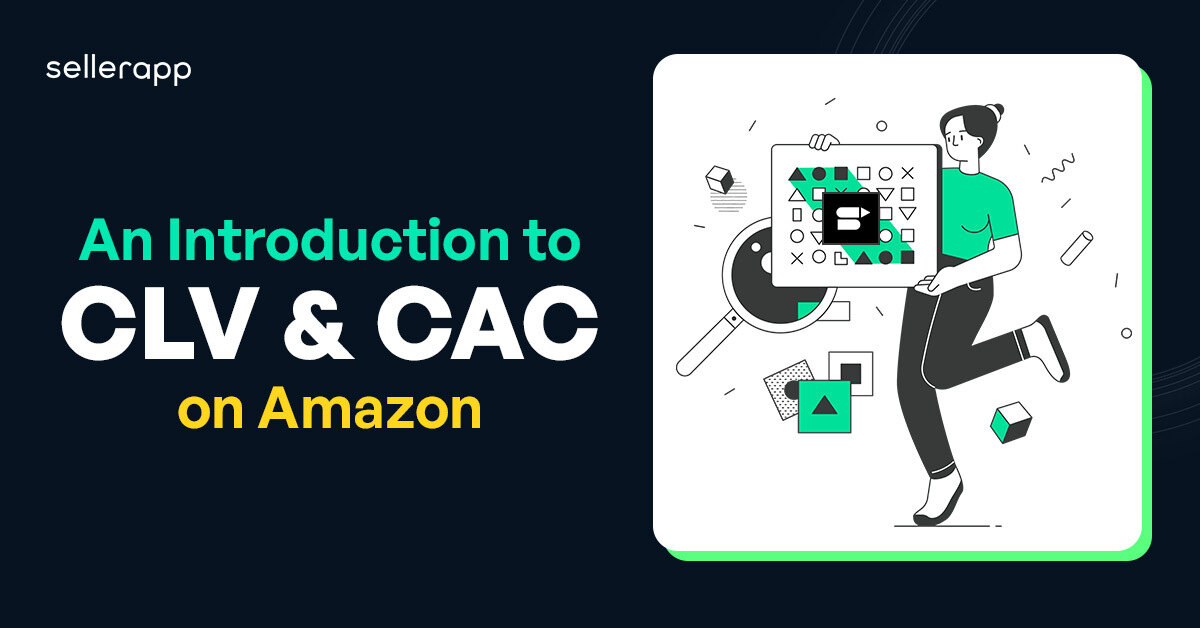
Your e-commerce business’s long-term growth is measured by two key metrics: CLV (Customer Lifetime Value) and CAC (Customer Acquisition Costs).
Winning new customers and retaining existing ones is an expensive game – You should understand the marketplace dynamics, customer demographics, pricing, and more.
While that is one part of the puzzle, understanding your customer relationship is another. Often, brands and aggregator firms pour millions of dollars into their advertising budget to get ahead of the competition, resulting in rising CPC.
According to recent data, the average cost of advertising on Amazon has grown significantly in the USA, rising from $0.78 in 2020 to $1.21 in 2021 – a nearly 50% increase year-over-year.
In this competitive marketplace, you must find ways to differentiate your products and brand and make sustainable profits. And CLV and CAC are more than just calculating your profits – They help you understand your relationship with your customer and analyze the profitability that comes with it.
This blog will tell you everything you need to know about CLV and CAC on Amazon and how it relates to growing your business.
A quick peek into the article:
- What is Customer Lifetime Value (CLV) all about?
- What is Customer Acquisition Cost (CAC) all about?
- What is CLV: CAC ratio?
- 7 Strategies to Optimize CLV: CAC Ratio
- Final Thoughts
What is Customer Lifetime Value (CLV) All About?
CLV, or Customer Lifetime Value, is a metric that measures how much a customer is worth to a business over the entire duration of their relationship. It helps businesses understand how to attract the right customers, allocate resources, and optimize their marketing strategies.
Most businesses will find that 80% of their revenue comes from 20% of their customers. So it’s imperative to know the ones that add better value than the rest. It helps you achieve a better CLV.
You need to consider the total average revenue generated by a customer and the total average profit to measure the CLV.
It provides important insights into how customers interact with your business and if your overall marketing plan is working as expected.
Recommended read: Types Of Data Available In Amazon Marketing Stream
What is Customer Acquisition Cost (CAC) All About?
Customer Acquisition Cost, or CAC, is a metric that measures how much money a brand spends to acquire a new customer. It is calculated by dividing the total marketing and sales expenses by the number of customers acquired in a given period.
CAC = Total Sales and Marketing Expenses / Number of New Customers
For example, if a company spends $100,000 on marketing and sales monthly and gets 500 customers, its CAC is $100,000/ 500 = $200.
CAC is an important indicator of the efficiency and profitability of a business. A low CAC means the company can acquire customers at a low cost and generate more revenue.
A high CAC means the company spends too much money to attract customers, and the profit margin is lower.
One of the factors that affect CAC is the industry that the company operates in. Different industries have different levels of competition, customer expectations, purchase cycles, and retention rates. Therefore, the average CAC for each industry may vary significantly.
For example, in e-commerce, the average CAC is around $45 to $50.
However, this is only a ballpark number. Many small businesses typically spend about $20 on customer acquisition. On the other hand, eCommerce giants such as Amazon and eBay spend $150 to $180 to acquire a single customer.
Conversely, highly competitive e-commerce businesses in the electronics, beauty, and industrial sectors sometimes spend above $200 to acquire a single customer.
Despite what the numbers say, keeping the e-commerce CAC as low as possible is recommended to keep sustainable long-term growth.
What is The Ratio Between Amazon CLV and CAC (CLV:CAC)?
One of the key metrics that e-commerce businesses use to measure their performance is the CLV:CAC ratio.
It’s the ratio of your brand’s Customer Lifetime Value and the Customer Acquisition Cost, which primarily indicates its profitability, growth potential, and overall business health.
CLV:CAC = Customer Lifetime Value (CLV) / Customer Acquisition Cost (CAC)
Let’s say the average CLV for your brand is $1,000. It means that, on average, a customer contributes $1,000 in net profit during their entire relationship with the company.
Now, let’s say the CAC for acquiring a new customer for your brand is $300.
So here’s the CLV:CAC ratio for your brand: $1,000 (CLV) / $300 (CAC) = 3.33
This indicates that, on average, your brand earns approximately 3.33 times more revenue from a customer over its lifetime than it costs to acquire that customer.
Recommended read: Factors that Can Cause Amazon to Ban Your Selling Account.
What Do Different CLV: CAC Ratios Mean For Brands
As an e-commerce seller, it’s important to understand the different CLV:CAC ratios to make informed decisions about your business.
CLV:CAC = 1
It indicates the customer acquisition cost is the same as the consumer lifetime value.
And while it looks like the brand is breaking even – in reality, you’re losing money per acquisition.
CAC only considers marketing and sales costs, CLV:CAC = 1 means you are at a loss once the taxes, shipping costs, COGS, and other costs are deducted.
CLV:CAC < 1
When the CLV is lower than the CAC, it indicates that the brand is spending more to acquire customers than the customer’s lifetime value.
This is a concerning situation, as the brand is not sustainable in the long run. In this case, you need to reassess its customer acquisition and retention strategies to reduce the CAC.
For instance, you can refine your advertising strategies to increase conversions and improve customer lifetime value through personalized offers, loyalty programs, and excellent customer service. It can lead to a higher CLV:CAC ratio.
CLV:CAC > 1
If a business’s CLV:CAC ratio is greater than 1, it generates more money from customers in their lifetime than the customer acquisition cost.
This is a highly desirable situation for any e-commerce business as it suggests that the brand is profitable and efficient in terms of customer acquisition and retention.
Usually, a 3:1 CLV:CAC ratio is considered a good ratio for any e-commerce business. It means the brand is making a significant profit and still has the capital to further scale the customer base.
This is also a common number that investors want to see before investing in the business.
Factors That Affect The CLV:CAC Ratio
Before you try to optimize the CLV:CAC ratio for your business, understand the different factors that affect the metrics.
After all, there are several ways to optimize the ratio, but choosing the right one depends on the specific issue you face in your business.
Customer Purchase Frequency
The frequency at which customers make purchases from your e-commerce store directly impacts the Customer Lifetime Value (CLV).
Higher purchase frequency indicates that customers are more engaged and loyal to your brand, increasing CLV.
For instance, consider an online beauty brand that offers a subscription service for monthly makeup boxes. Customers who subscribe to this service contribute to a higher CLV than one-time purchasers.
Recurring Business Model
E-commerce businesses that operate on a recurring revenue model, such as subscription-based services, have the advantage of generating consistent and predictable revenue over time.
This leads to a higher CLV:CAC ratio, as the Customer Acquisition Cost (CAC) is spread across multiple transactions.
A prime example of this is Fresh – a beauty and skincare brand. The brand offers an auto-replenish option that gives customers a 10% discount on every replenishment order.
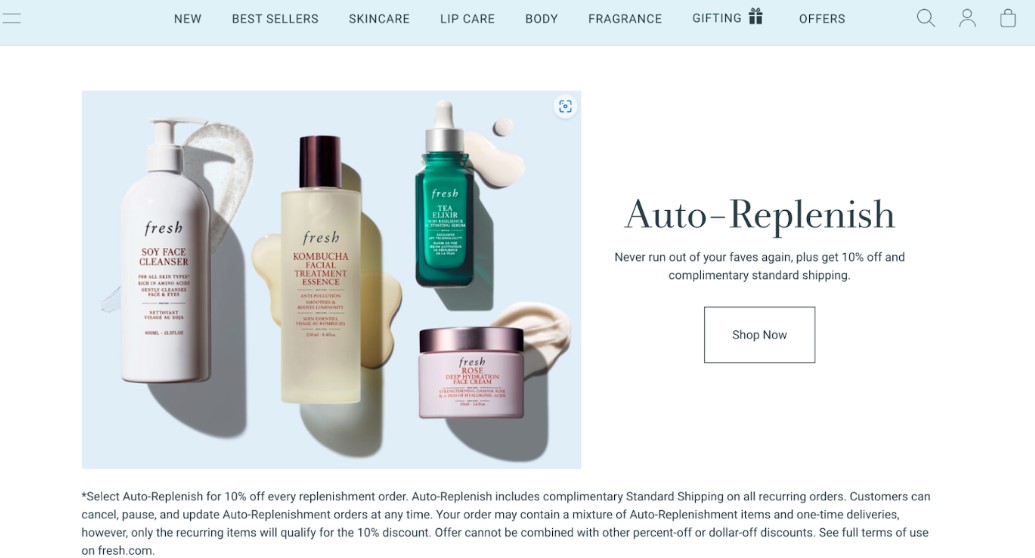
It increases customer retention and increases the CLV:CAC ratio.
Customer Average Order Value (AOV)
The average amount customers spend on each purchase is crucial in determining CLV.
Businesses with a higher average order value generally have a higher CLV:CAC ratio, as they can quickly recover their acquisition costs.
For example, consider an electronics brand that sells high-ticket items like smartphones and laptops. These brands usually have a higher CLV:CAC ratio because customers spend more on each purchase.
Customer Retention and Churn Rate
The time duration a customer stays with your business significantly impacts the CLV:CAC ratio.
A higher customer retention results in a longer customer lifespan, leading to a higher CLV:CAC ratio.
Conversely, a high churn rate can diminish CLV, as the acquired customers do not stay with the business long enough to generate substantial revenue.
7 Strategies to Increase CLV: CAC Ratio
Now that you’ve understood the different factors affecting the CLV:CAC ratio let’s see how to optimize the ratio for long-term business growth.
It’s worth noting that optimizing the CLV: CAC ratio is not easy. It requires a strategic approach that balances both increasing the value of existing customers and reducing the cost of acquiring new ones.
Here, we have shared six strategies that can help you optimize your CLV:CAC ratio and grow your business.
Launch Subscription
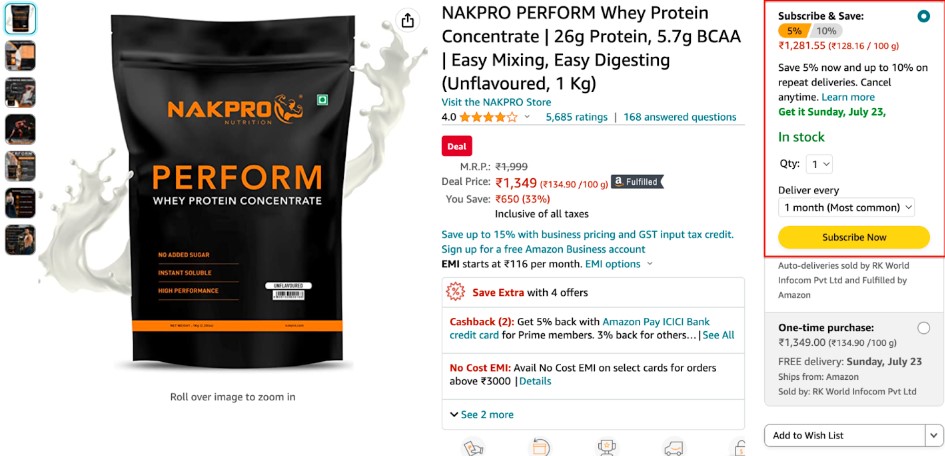
Subscription models or paid membership plans often create recurring revenue streams that increase customer retention and loyalty.
Customers who subscribe to your products are more likely to stay with you for a long time, which means greater revenue for your business.
However, the key here is to identify the options that best suit your products and customer base.
What type of product do you offer? Is it an FMCG product, such as food or household supplies, or do you provide a curated selection in categories like beauty or fashion?
A subscription model may be the best option here!
On the other hand, you can create a value proposition where customers get extra benefits by paying a membership fee. In that case, you can consider a paid membership program.
An example of this is Savage X Fenty – a lingerie brand by Rihanna.
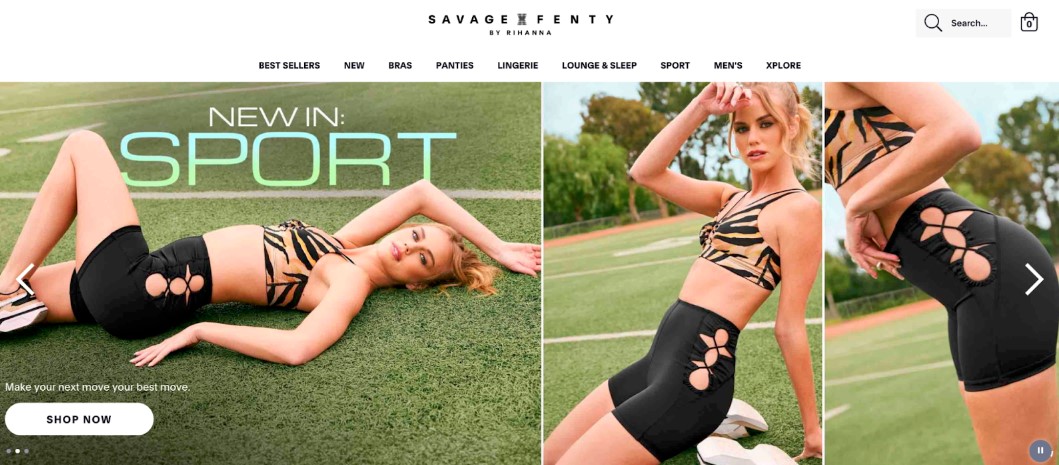
They offer a VIP membership option where members can access unique benefits and discounts, such as, up to 25 percent off orders, early access to new products, free returns, and exclusive VIP lingerie sets.
This is an excellent way to increase the CLV and optimize the e-commerce CLV:CAC ratio.
Create a Community
Community building enables and nurtures a network of loyal and engaged customers who share a common interest, passion, or problem. Thoughtful community building offers a wealth of benefits to e-commerce brands.
For example, brand-loyal customers usually make more purchases with higher AOV, which increases CLV and customer retention. It also turns them into brand advocates who recommend the brand to their friends and family.
This word-of-mouth marketing is essentially free and drops your customer acquisition cost by a significant margin.
A prime example is Pura Vida Bracelets – a jewelry and bracelet brand for millennials and Gen Z.
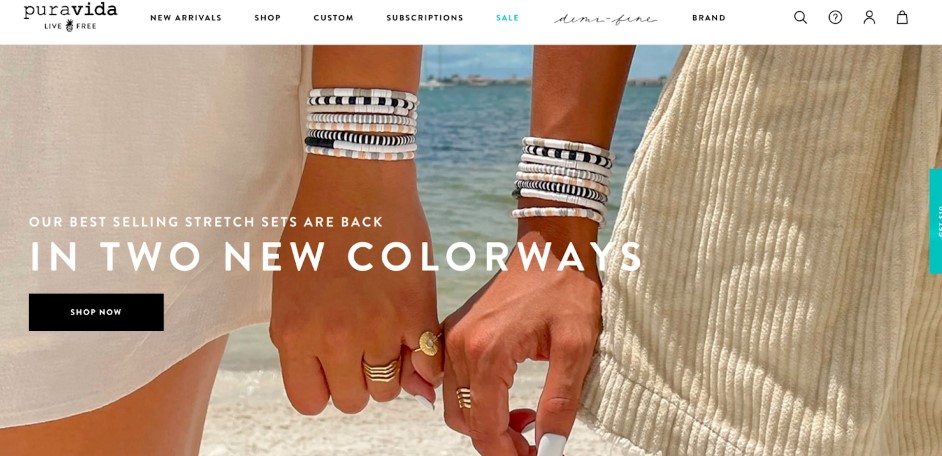
Pura Vida Bracelets has special charity collections with limited edition bracelets where 100% of the earnings go directly to social and emergency causes.
They have built a community over the years where shoppers feel good after buying products from the store. In this way, they have reached millions of customers without direct ads or promotions.
Cross-sell Using Product Bundling
Amazon Product bundling is one of the most effective ways sellers can cross-selling products. Here, you offer complementary products that enhance the use of a primary product in a single package.
For instance, if your customer is interested in a TV set, you can offer an enhanced bundle with a sound system, wall mount, and HDMI cables at a discounted price.
Cross-selling can increase the average order value (AOV) and encourage repeat purchases from customers who find value in the additional items.
On the other hand, upselling is the practice of persuading customers to buy a more expensive or upgraded version of the product they are interested in.
For example, if a customer is looking at a 32GB iPhone on Amazon, you can showcase upsell offers for a 64GB or 128GB iPhone or an iPhone with a better camera or battery life.
Upselling increases the AOV and boosts customer satisfaction and loyalty by providing them with a better solution for their needs.
Improve the Checkout Process
Studies have shown that the average cart abandonment rate globally is around 69.5%, which means that almost 7 out of 10 online shoppers do not complete the purchase.
It results in lost revenue and wasted marketing efforts for your business and, in turn, reduces the e-commerce CLV:CAC ratio.
To reduce cart abandonment, you can focus on improving the checkout process with the following tactics:
- Use one-page checkouts for a quick transaction
- Offer multiple payment options
- Provide clear shipping information
- Display trust signals like security badges or customer reviews on the checkout window
- Ensure fast page loading speeds
You should also use exit-intent popups, email reminders, or retargeting ads to recover abandoned carts and encourage customers to complete their purchases.
Create a Referral Program
Similar to community-building activities, referral programs are also an excellent way to expand brand awareness, get more customers, and reduce customer acquisition costs.
Let’s take a look at an excellent example of a successful referral program from Ztylus.
Ztylus specializes in selling multifunctional phone cases, smartphone add-on lenses, and various phone and automobile accessories.
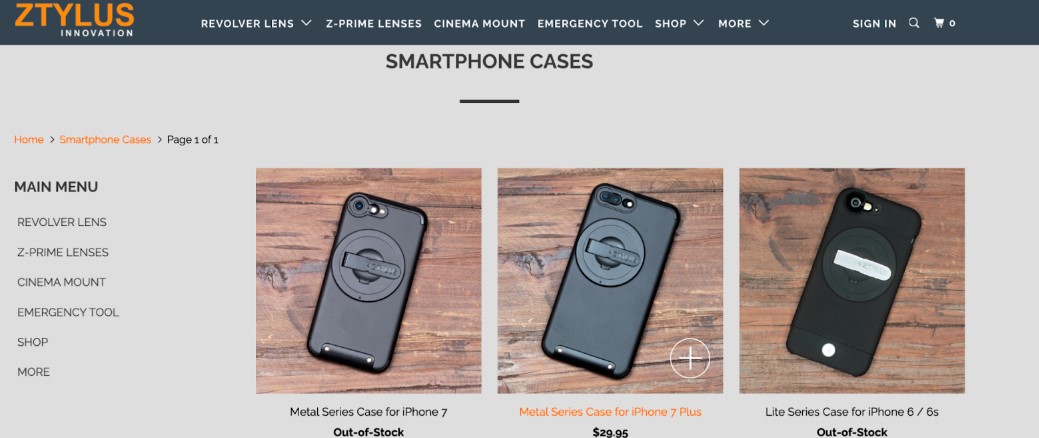
Also, Ztylus offers a unique referral program to its shoppers. The shoppers can share referral codes with anyone and earn a 10% commission on everything anyone buys from the code. The referred customers can also save 25% on their first purchase.
This referral program helps Ztylus attract and retain more customers and increase the CLV:CAC ratio.
Prioritize High-CLV Products on Advertising
Review your product catalog and analyze the products that drive repeat purchases.
These are your star products. Target them with your PPC advertising to increase the overall CLV.
Winning better sales with advertising also improves the organic ranking of these products – It further reduces the CAC in the long term and boosts the overall profitability of the business.
Read the Advanced Amazon PPC Strategy Guide to learn more about different PPC strategies.
Invest in Content Marketing
Content marketing is a key area of focus for any e-commerce brand for healthy and long-term business growth. It focuses on providing your customers with relevant, engaging content that enhances the value of your brand and brings awareness.
Creating a well-rounded content strategy is essential to attract and retain new customers and optimize the CLV:CAC ratio.
Types of content to consider:
- SEO-Optimized Product Landing Pages: Create landing pages optimized for search engines, targeting keywords relevant to your target market’s interests.
- Educational Blog Posts: Delve deeper into topics related to the problems your product addresses. Offer informative blog posts that provide valuable insights to your audience.
- Podcasts or YouTube Channel: Engage your audience through entertaining content, such as podcasts or YouTube videos. Consider conducting guest interviews to add variety and value.
- Influencer and Social Media Marketing: Collaborate with influencers in your industry to promote your brand and share relevant content and ideas with your target audience through social media.
By strategically integrating content marketing, your brand can significantly improve customer experience, build brand loyalty, and achieve a healthy CLV:CAC ratio.
Final Thoughts:
E-commerce is no doubt a customer-first business. To ensure repeat customers, focus on cost-effective customer acquisition and long-term satisfaction.
And the CLV:CAC ratio is one of the most valuable KPIs that allow you to understand if you’re on the right track.
However, this metric is not the magic solution for all your problems.
You still need a strong marketplace partner and solutions to maximize your business’s value.
And that’s where SellerApp comes on.
We offer a 360-degree analytics solution to e-commerce brands to help you make data-driven decisions about every aspect of the business with solutions like market intelligence, competitor analysis, data warehousing, business monitoring, and more.
Our team will work closely with you to develop customized business strategies and data solutions that foster continuous business growth and drive tangible results.
Schedule a call with us and let SellerApp be your partner in success as you navigate the ever-changing world of e-commerce.
Additional read:
What Are Amazon Compliance Documents?
How does Amazon Marketing Cloud work?
What Is the RMA Number on Amazon?
How to optimize ads with AMC and Amazon Ad Server?


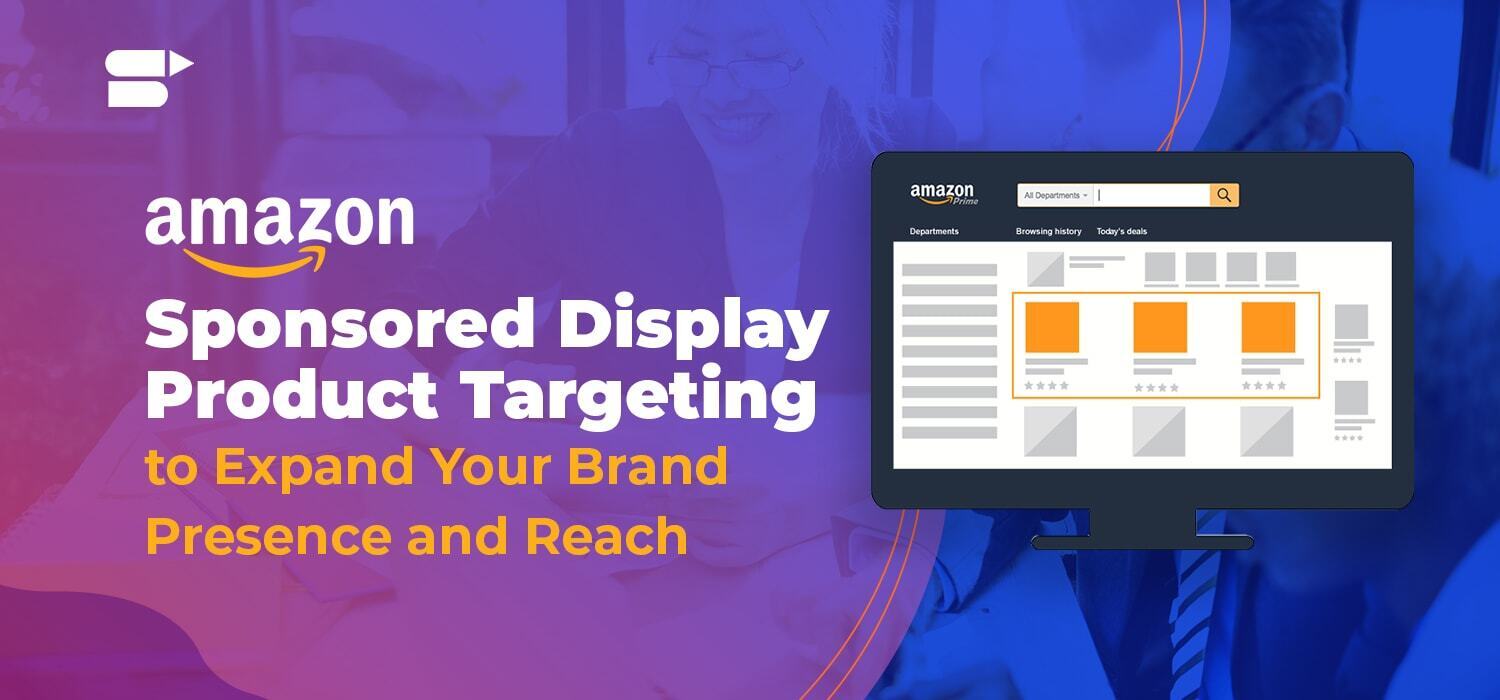
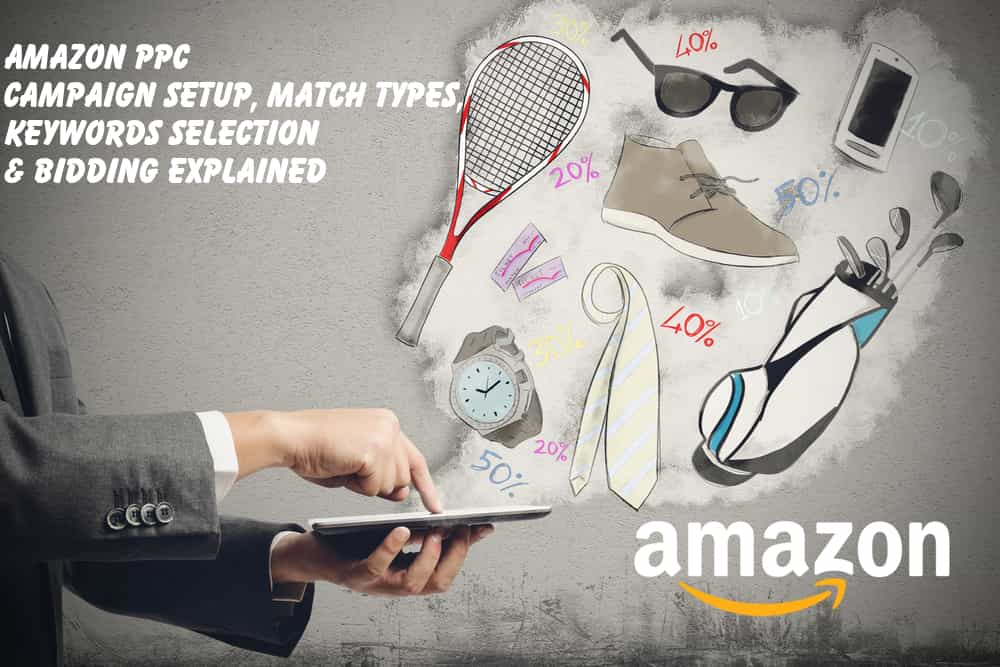
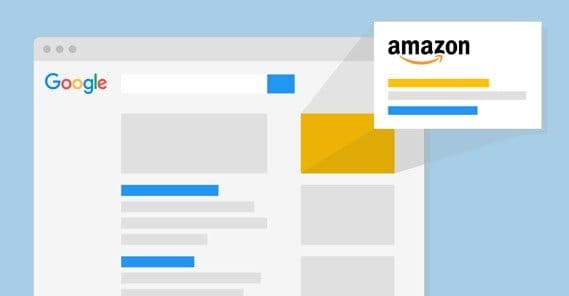
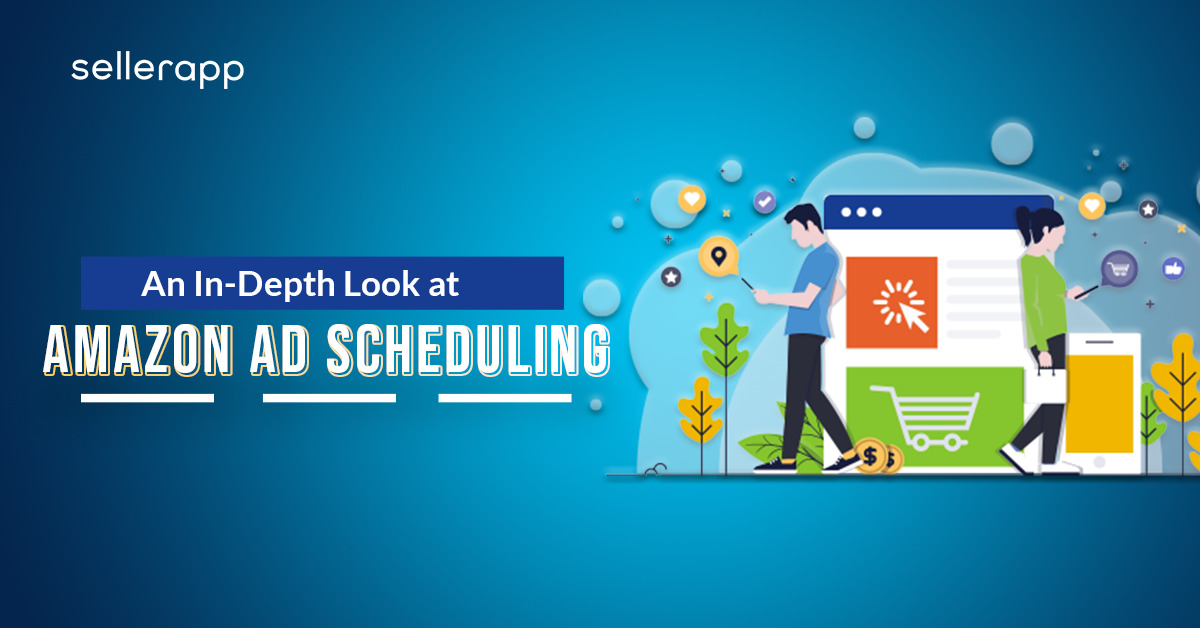
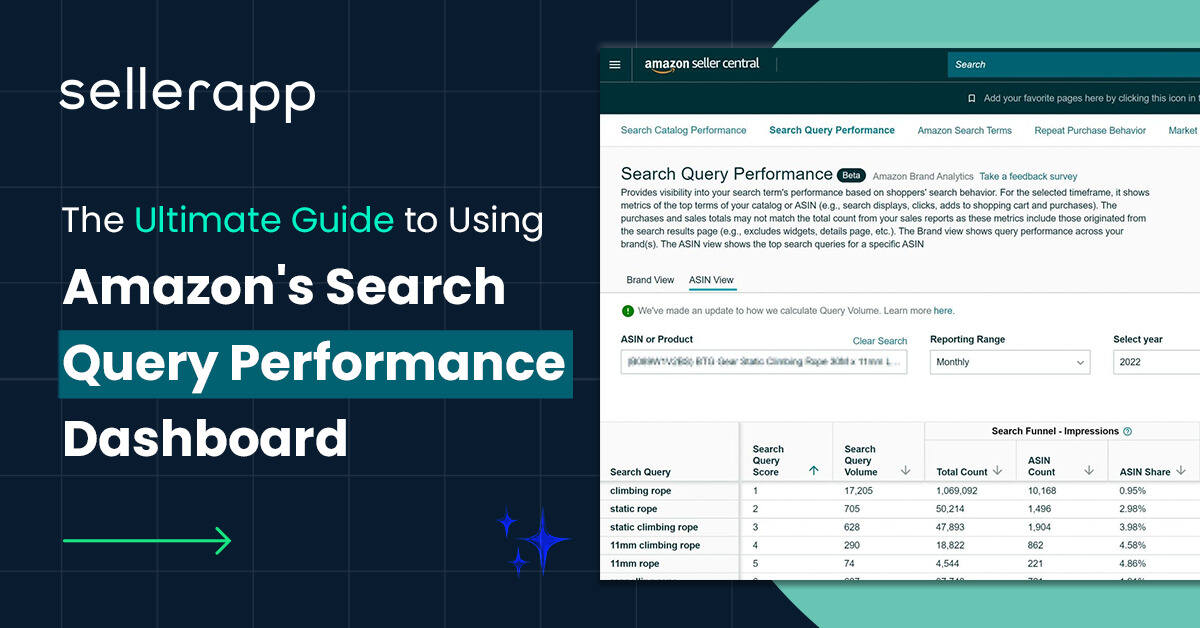
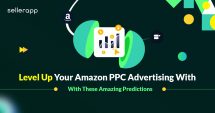
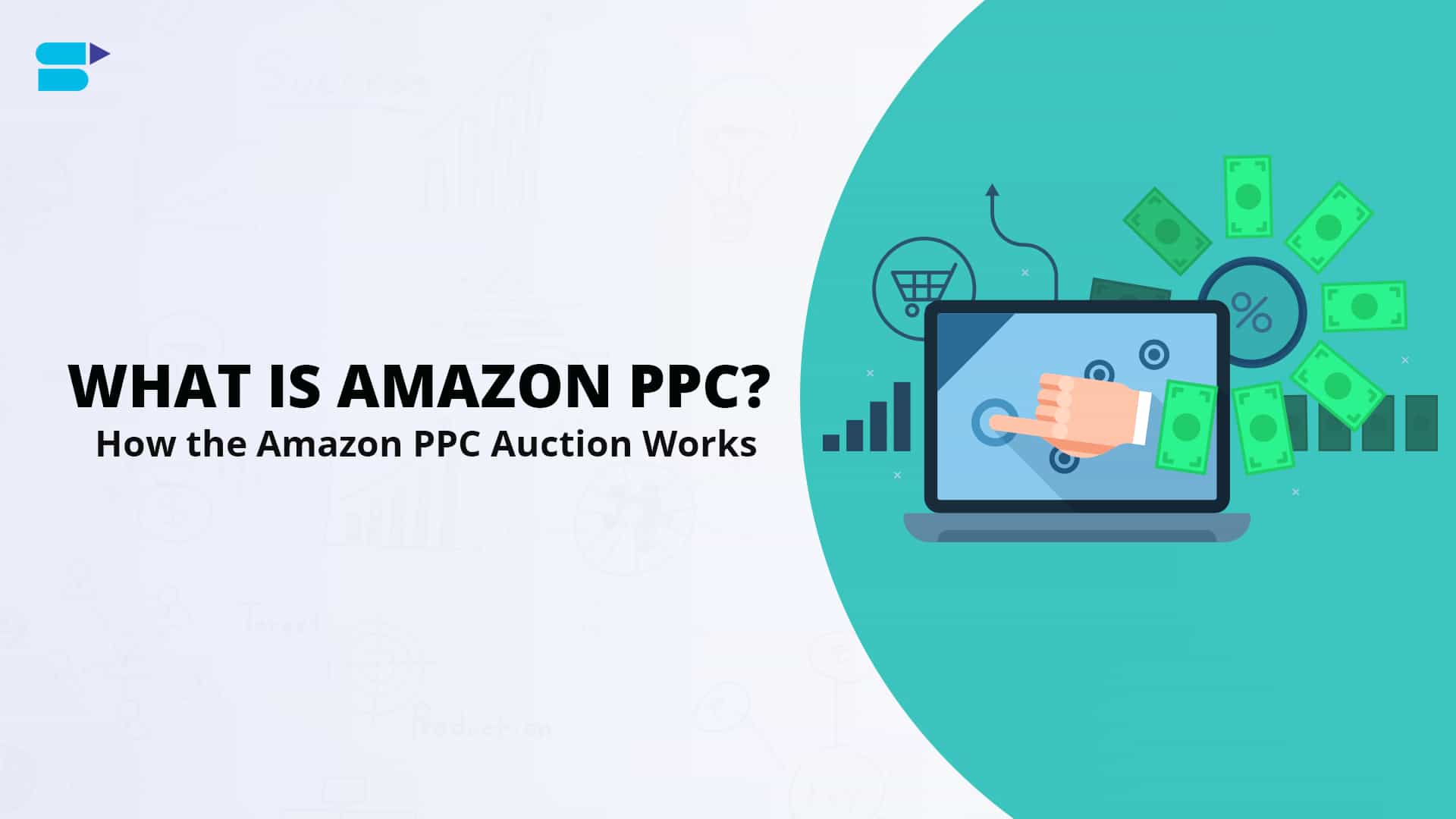

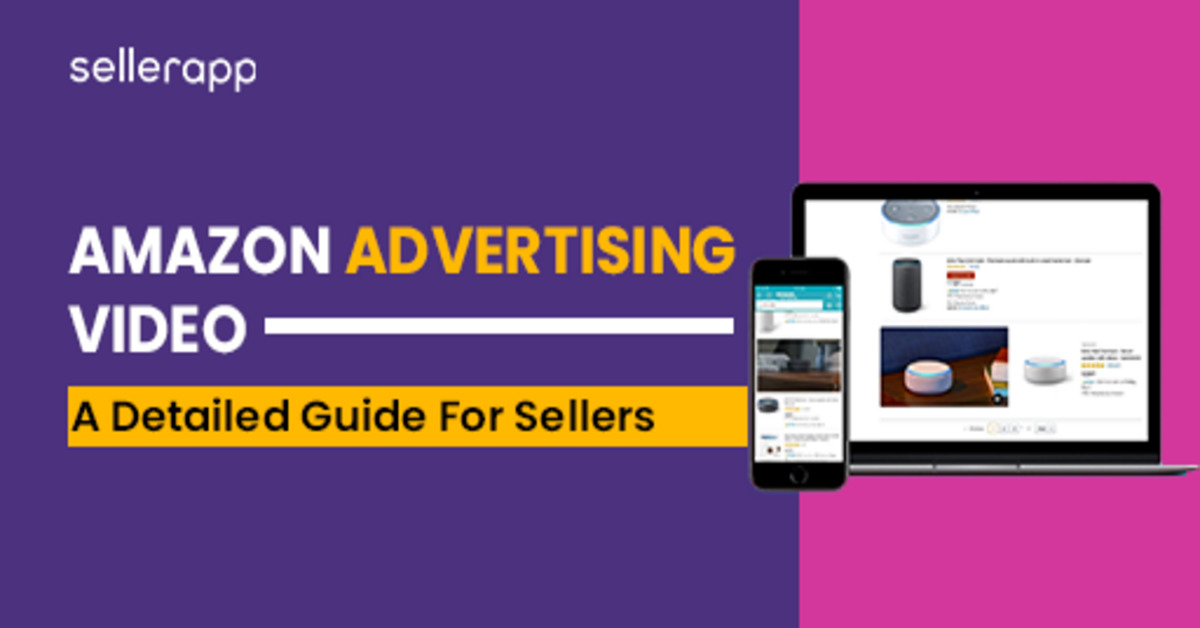
Camper
October 30, 2023Thanks for sharing the information.
Clare Thomas
March 13, 2024Thank you for your feedback.
Brian
November 15, 2023That was a very informative post.
Clare Thomas
March 13, 2024Thank you for reading.